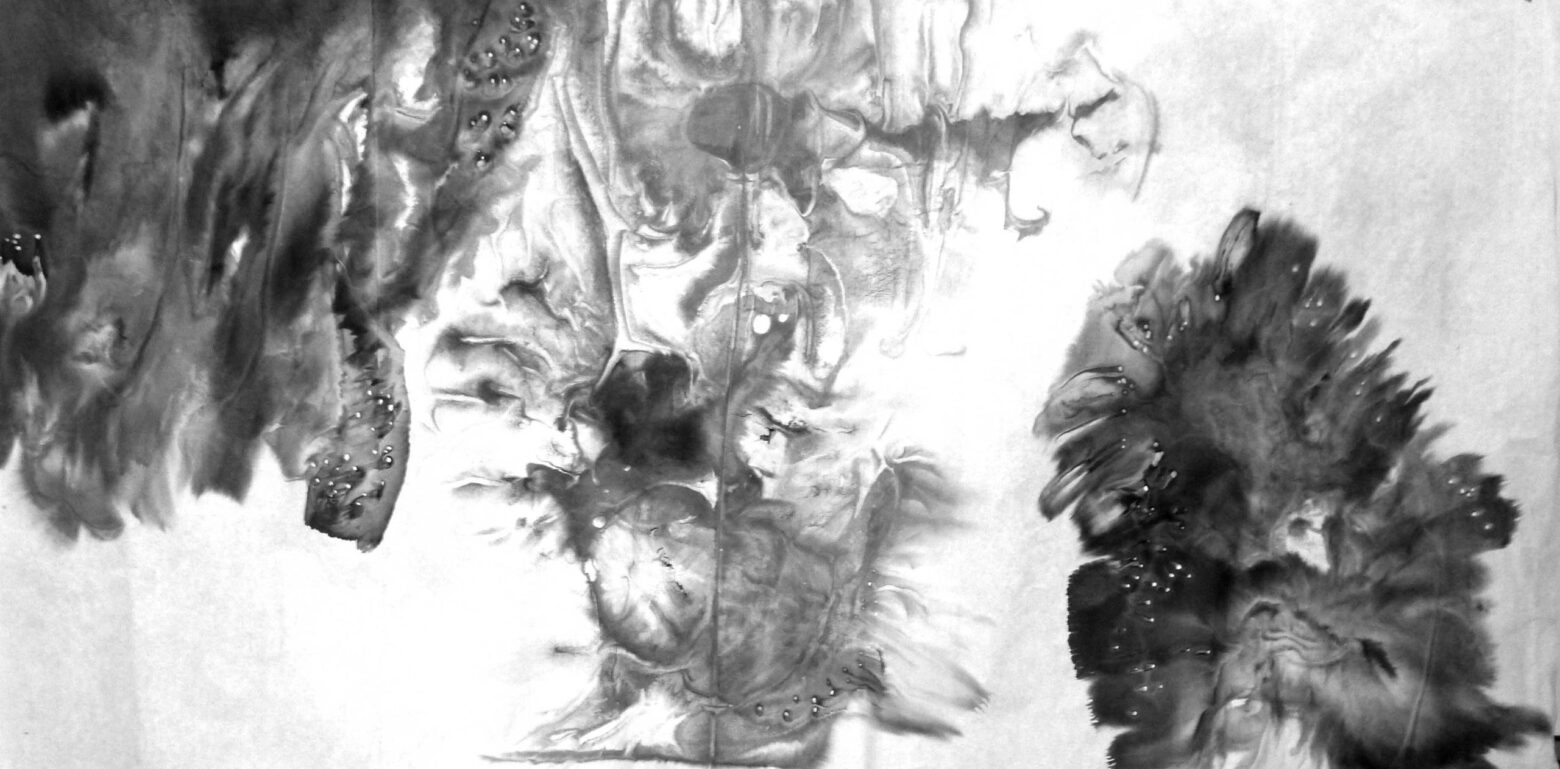On a recent Monday evening, I helped my sixteen-year-old son prepare for his upcoming physics test. We reviewed formulas for velocity, gravitational pull, momentum, acceleration, and centripetal force. Immediately following our study session, we began talking about a show of Ming Ren’s paintings that we had both seen. This apparent leap of subject matter was not accidental. With further reflection, and as our conversation developed, we realized that Ming’s paintings were a creative extension of the laws of physics—a leap into a world of unlimited invention merging science and art. His works call to mind the laws of the physical universe while appearing to defy them. They contradict our inculcated perceptions of a unified world governed by gravity and they pull us into new, unfamiliar spaces that challenge Western notions of picture plane and perspective. His paintings manipulate time and space; they fuse the East with the West and reveal new, unexplored territory.
As an artist, Ming Ren is a force of nature. He is a highly disciplined painter who sustains a fierce studio regimen and maintains regular contacts with colleagues in the U.S. and China. His work expresses a seemingly inexhaustible energy and expansive vision. Constantly experimenting with new materials and developing innovative studio methods, Ming’s newest paintings include some enormous wall-size works that re-calibrate and expand our typical viewing experience. With close examination they often manage to change scale, at times appearing to recall microscopic details or Petri dish specimens only to suddenly shift and bring to mind the vastness of space rarely experienced without looking through a telescope or by visiting a planetarium.
Ming has developed an impressive formal vocabulary that is distinctive and rich. Long hours in the studio have given him the confidence to take advantage of the inevitable accidents of his improvisational style. He welcomes surprises while he paints and he also invites the viewer to creatively participate with his paintings. His deft handling of paint results in an unexpected and compelling visual experience. Combining stains, inks, drips, powdered pigments, non-traditional surfaces, and mixed media, Ming creates a transcendent landscape that sometimes recalls Max Ernst’s inventive use of rubbing and transfer techniques or the paintings of Morris Louis.
Schooled in both China and the U.S., Ming defies easy categorization. He retains vestiges of the strict training and technique he learned at the China Academy and combines this classical training with the energy and openness of contemporary Western practice. His frequent exhibits show the work of a confident, curious, and prolific artist whose work is constantly evolving and whose style is never static. I always look forward to Ming’s exhibitions and I am pleased that, through this impressive book, more people will now have the opportunity to be introduced to this exciting artist.
Stephen Beal, President
California College of the Arts
